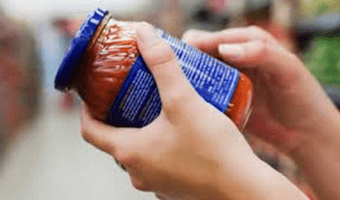The food, food safety, and nutrition regulatory landscape is busy as always as we move ahead in...
Related posts


The food, food safety, and nutrition regulatory landscape is busy as always as we move ahead in...

The FDA recently published a warning letter sent to a food manufacturer that processes/packages...
Food manufacturers have a responsibility to ensure the safety and regulatory status of the chemical substances they use in food or that come into contact with food. They are required to implement preventive controls as needed to significantly minimize or prevent exposure to chemicals in foods that are hazardous to human health. The FDA assists the food industry through guidance documents, programs such as FDA’s Closer to Zero initiative that focuses on reducing childhood exposure to contaminants from food and pre-market approval programs that authorize the use of several categories of food chemicals before they enter the marketplace.
The FDA recently issued a final rule to amend their regulations (21 CFR 170.105 and 21 CFR 170.102) on how and when the FDA may determine that a food contact notification (FCN) is no longer effective. An effective FCN authorizes the use of a food contact substance from the manufacturer or supplier identified in the FCN. A list of effective FCNs can be found on the FDA’s website.
With respect to food contact substances such as those used in packaging, the FDA can now determine an FCN is no longer effective for safety reasons or reasons other than safety. For example, the manufacturer may no longer produce, supply, or use the food contact substance. The final rule also gives manufacturers or suppliers an opportunity to provide input before the FDA determines that an FCN is no longer effective.
The final rule keeps in place the FDA's ability to revoke an authorization based on safety concerns. The FDA can still declare an FCN no longer effective if the manufacturer or supplier does not provide the necessary data or information to address safety concerns. Also, the FDA can still revoke authorizations based on safety concerns even if the notifier decides to abandon the authorized use. The FDA publishes a notice of their determination in the Federal Register. The date of publication is when an FCN is no longer effective. When an FCN is no longer effective, the use of the food contact substance as described in the FCN is no longer authorized. In addition, the FDA intends to update its list of effective FCNs on the FDA’s website.
To obtain this authorization, a manufacturer of a food contact substance is required to submit pre-market information to the FDA that demonstrates its use meets safety standards. The FDA has established several programs to help manufacturers demonstrate that a chemical is not harmful when used as proposed (described below).